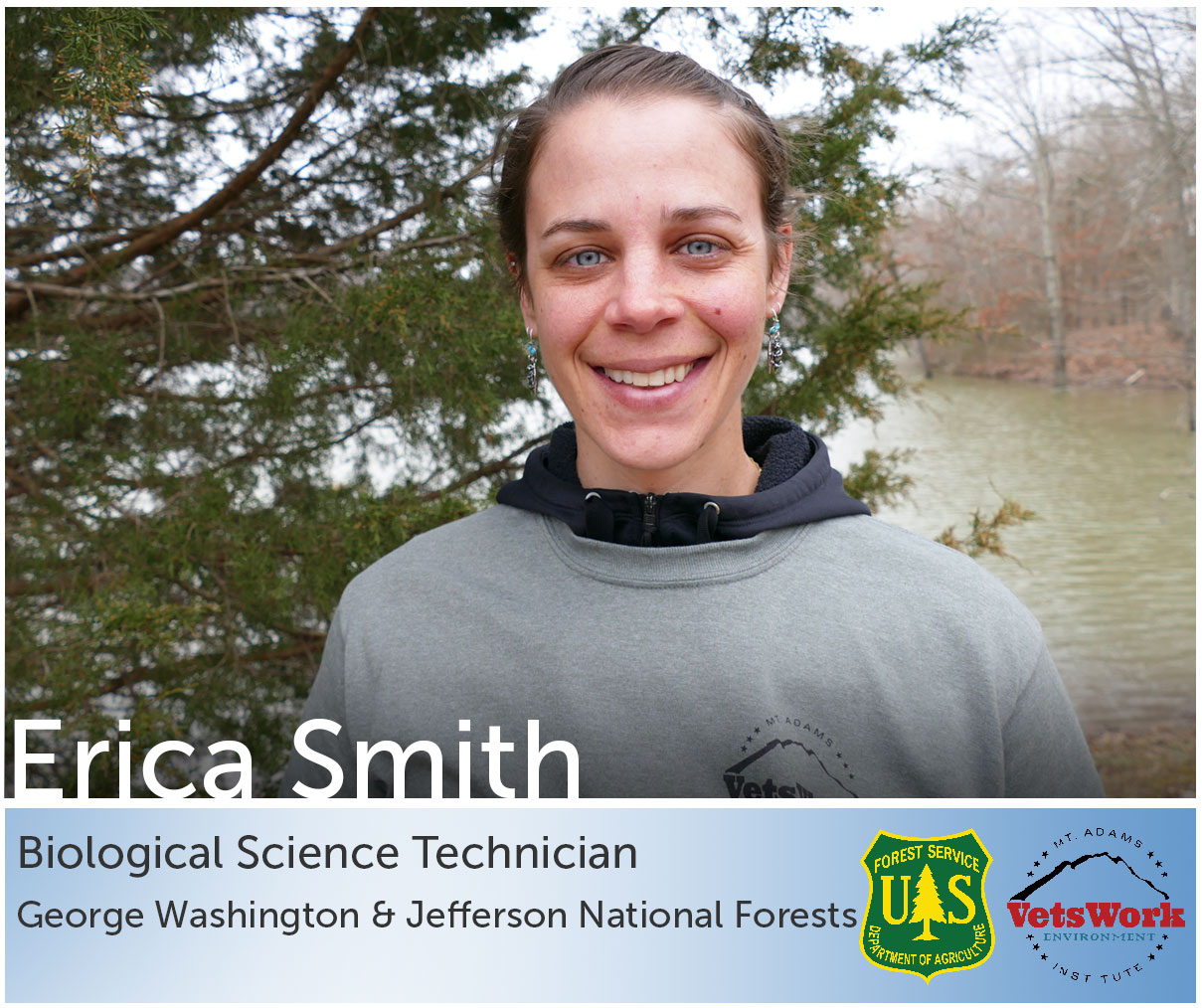
Nestled in the Eastern slopes of the Allegheny Mountains, the Warm Springs/ James River Ranger District on the George Washington and Jefferson National Forests experiences spring in spectacular fashion.
I arrived in Bath County in early March. On my first day, my supervisor and I plowed the road to my temporary staff housing. We spent 30 minutes waiting for a tow truck with a traveling nurse whose SUV slid into a ditch on the icy dirt road along my driving route to work. Leatherwood House is an old hunting lodge turned dormitory for seasonal and temporary Forest Service staff members. The large wood stove in the main living area hinted at bitterly cold winter days.
My field season began with a partnership with the Virginia Department of Game and Inland Fisheries (VDGIF). We spent several weeks rigging mist nets to capture woodcock during their evening mating display. The woodcock were then aged, sexed, banded, and fitted with a GPS transmitter before being released to continue their spring migration. The tracking information will provide valuable data about woodcock habitat and behavior. After woodcocks, we moved on to resident Canada Geese. VDGIF has issued a nest and egg depredation order in an effort to reduce conflicts between geese and human populations. At Lake Moomaw, the conflicts center on an elevated risk of disease in humans caused by fecal matter on beaches and in the water. In addition to hunting adult geese, egg addling has been adopted as a population control method in the area. In a single day, our team of two were able to treat nine nests and nearly fifty eggs during early spring incubation.
Next we put a four person saw crew from the Greater Appalachian Valley Conservation Corps to work planting trees. We planted 300 trees at Walton’s Tract to reforest a field that had previously been used for farming. We broke-in a shiny new ground auger that brought back memories of ice fishing with my dad in Minnesota. We planted sycamore, black walnut, red oak, bur oak and a few fruit trees. These saplings will serve as a riparian buffer and are part of the Lower Cowpasture River Restoration and Management Project. The crew finished their nine day hitch at Hidden Valley Recreation Area, brushing a popular hiking and wildlife viewing trail system.
Finally, the wildlife management department gained a seasonal employee in April whose primary focus is to inventory the forest water holes. Natural vernal pools are highly ephemeral, which increase ecosystem resources for a wider variety of species. Constructed water holes are designed to retain water year round, like a pond, and host amphibians and fish who need more permanent water features to breed and survive. The current inventory of our water holes is incomplete and mostly consists of field notes passed down from previous biologists and paper maps with post-it notes. I accompanied our researcher for several weeks to calculate size, quality, and presence/absence of indicator species in various locations. So far, we’ve found over 10 different species of salamander and frog, in the form of egg masses, larvae, and adult stages. We also visited a site that had been seriously damaged by UTV traffic in 2018. Thanks to last year’s efforts by a few skilled sawyers, we were happy to discover all five indicator species of a healthy natural seasonal pond.
Along the way I’ve witnessed the landscape changing. Plants and animals are emerging more slowly here in the mountains, but the diversity that higher elevation habits can create in the Southern Appalachians has always been something that draws me to these places. On a sunny day in April, from the peak of a highland ridge, you can actually see the line where the leafed-out trees of the valley meet the dormant trees on the slopes. The flora and fauna have been spectacular and I’m looking forward to full summer in the Virginia’s mountain region.

